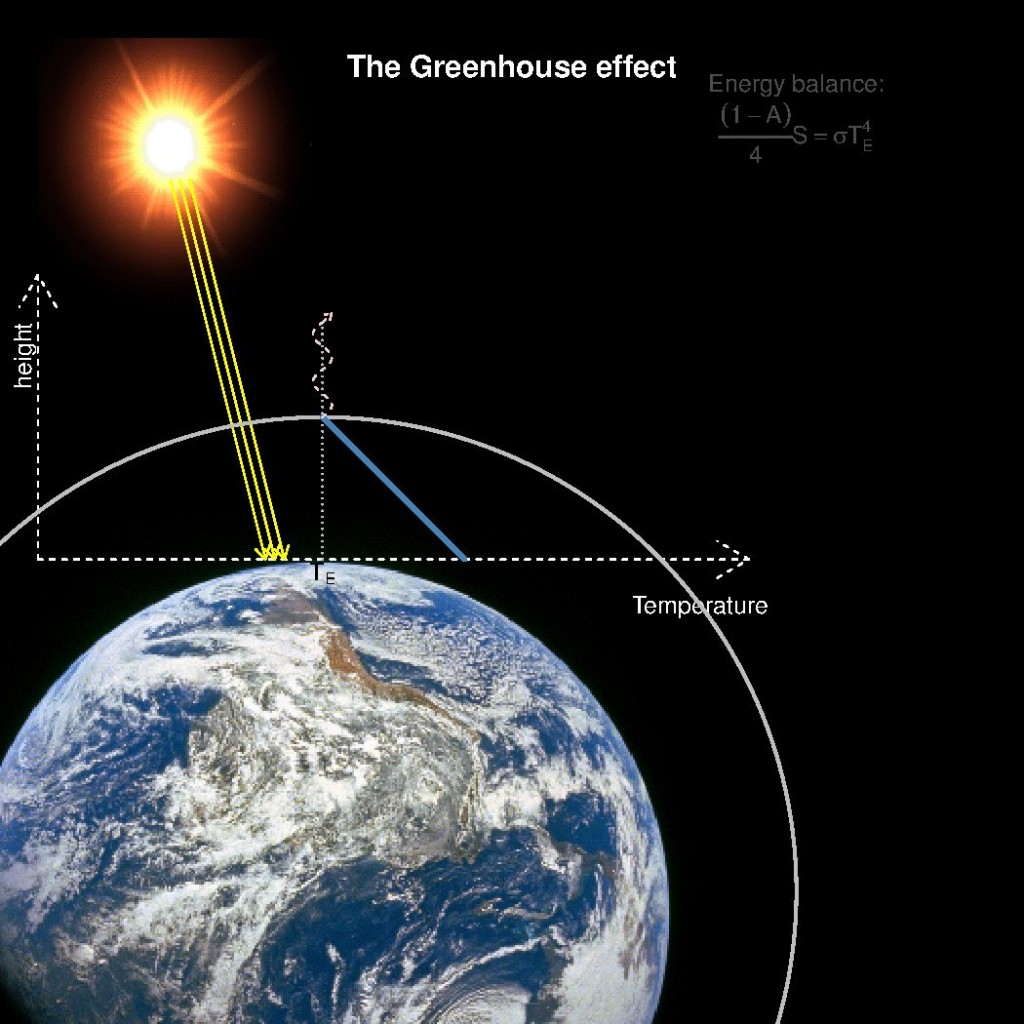Prompted by a newly released paper by Rasmus Benestad entitled “A mental picture of the greenhouse effect“, here are some resources that help explain the Greenhouse Effect (GHE for short):
Here’s an extract from an introductory article providing “A brief history of climate science” by Ed Hawkins, a climate scientist at the University of Reading:
Climate change is often seen as a recent phenomenon, but its roots are actually far older – the effects of human activity on the global climate have been discussed for more than 150 years.
In the 1820s, the French mathematician Joseph Fourier was trying to understand the various factors that affect Earth’s temperature. But he found a problem – according to his calculations, the Earth should have been a ball of ice.
The most obvious factor, the Sun, did not seem to provide enough energy to raise the temperature of Earth above freezing. Fourier’s initial ideas, that there must be additional energy coming from the Earth’s core or from the temperature of outer space, were soon dismissed. Fourier then realised that the atmosphere, which at first seemed transparent, could be playing a crucial role.
Ed doesn’t mention the pioneering work of Eunice Foote, who pointed out in 1856 that:
My investigations have had for their object to determine the different circumstances that affect the thermal action of the rays of light that proceed from the sun…
The highest effect of the sun’s rays I have found to be in carbonic acid gas.
Then in 1861:
The Irish physicist John Tyndall performed an experiment which changed our view of the atmosphere. Tyndall demonstrated that gases such as methane and carbon dioxide absorbed infrared radiation, and could trap heat within the atmosphere. He immediately realised the implications and remarked that these gases “would produce great effects on the terrestrial rays and produce corresponding changes of climate.”
More recently there were some real world experimental results:
Guy Stewart Callendar was a steam engineer who was fascinated by the weather. He meticulously collected temperature records from around the world, examined the carbon dioxide measurements and studied the work of Arrhenius and others. In his spare time, and without the aid of a computer, he performed the tedious calculations required to measure the temperature of the planet. These efforts produced the first evidence that Earth’s surface was warming.
A demonstration of carbon dioxide absorption of infrared radiation by Iain Stewart, Professor of Geoscience Communication at the University of Plymouth:
MinuteEarth wonder “Why is the Earth Warm and the Moon Cold?”
An explanation of the greenhouse effect by Ray Pierrehumbert, current Halley Professor of Physics at the University of Oxford, in both text:
“Infrared radiation and planetary temperature”
and video:
The animation from Rasmus Benestad‘s article about his new paper at RealClimate:
